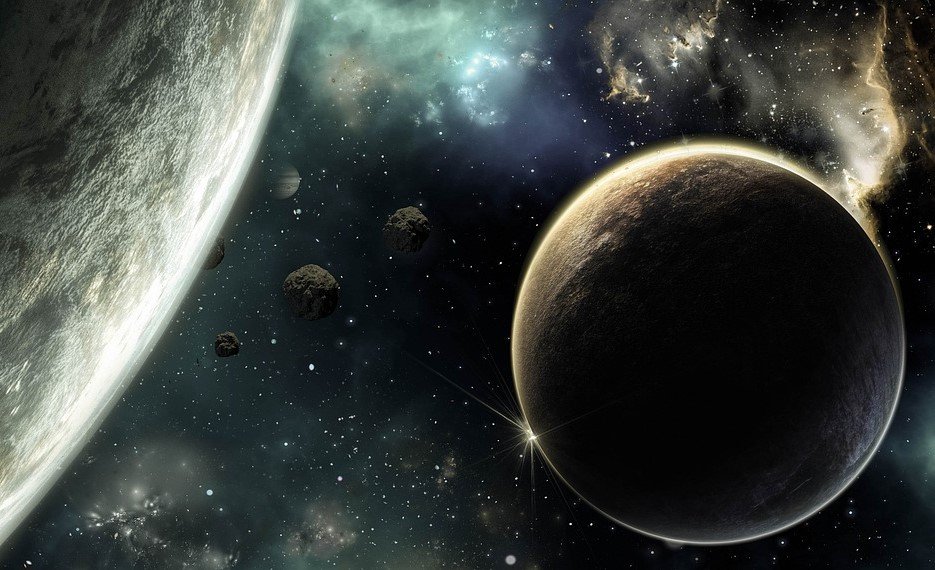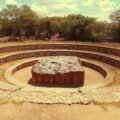A new paper by a Japanese researcher says that microscopic forms of alien life from other planets outside of our solar system may hitch a ride to earth on particles of space dust. According to the paper, even if these life forms don’t survive the trip across the cosmos, researchers should still be able to find ancient fossils, or possibly DNA fragments from these particles of space dust, if there is life on the planets from which they come.
Presently, there is no mapped-out plan to collect these particles for analysis. However, the lead author behind the paper told The Debrief that along with searching the earth’s orbit for these extrasolar dust particles, they might also be found deep within the earth’s oceans or even buried in the ice of Antarctica. Furthermore, he noted that even extremely tiny dust particles might be enough to prove that life exists on other planets.
“I proposed that the best size is one micrometer because it is comparable to the size of (the) smallest microbes,” said Professor Tomonori Totani from the University of Tokyo in an email to The Debrief. “Such particles are easily ejected from their home planetary system because of solar radiation pressure.”
Space Dust Can Travel the Cosmos
When space bodies like comets and meteors collide with planets, they are often powerful enough to eject some of that planet’s material into the void of space. Therefore, the theory goes, if there are microscopic life forms within these particles of space dust and they end up traveling across the cosmos to reach earth, those microscopic organisms could still be there.
Of course, the vacuum of space and the potentially millions of years these types of particles would take to get from any life-harboring planet to earth means that the chances of any of these life forms surviving the journey are effectively nil, at least to our understanding of life. However, the signs of this alien life should still remain in either fossilized form or as small fragments of life frozen for the long journey by the sub-freezing temperatures of deep space.
Therefore, Totani says that humans looking for signs of life on other planets should look for these particles of dust to determine if there is life elsewhere.
“The search for life outside our solar system typically means a search for signs of communication, which would indicate intelligent life but precludes any pre-technological life,” the professor explained. “Or the search is for atmospheric signatures that might hint at life, but without direct confirmation, there could always be an explanation that does not require life. However, if there are signs of life in dust grains, not only could we be certain, but we could also find out soon.”
Where should we look for Extrasolar Planetary Fragments?
Although there is no easy way to count the number of particles of dust in space that come from planets outside of our solar system, Totani’s models suggest that this number could be much larger than you think. In fact, he calculates that a surprisingly large number of particles of extrasolar space dust from exoplanets could enter our atmosphere on a regular basis.
“I calculate around 100,000 such grains could be landing on Earth every year,” Totani explained in the press release announcing his new research paper.
Totatani told The Debrief that finding these pieces on earth and confirming they are indeed from a planet far, far away would be particularly difficult but not impossible. And, he notes, the best places might be locations where these dust particles can be preserved in near pristine form.
“I guess Antarctic ice is probably the best because of the cleanest environment,” Totani told The Debrief. “Interplanetary dust particles have already been collected in Antarctic ice and deep-sea sediment, so it is a matter of quantity.”
Still, the professor believes that the best way to gather these types of extrasolar space dust and be confident that they are from planets outside of our solar system is not to search the remote parts of our own planet. Instead, he suggests catching them while they are still in space.
“In case of collecting these particles in space, you can measure (the) orbit of particles,” Totani told The Debrief, “so you can tell that a particle came from outside the Solar system.”
How Soon Before We Can Look for Alien Life in Space Dust?
The professor notes that his paper, which is published in the International Journal of Astrobiology, is only a first step. Still, the science he presents could and should lead to a real-world mission at some point in the not-too-distant future.
“I believe by future technological developments, we will be able to collect grains from outside the Solar system,” Totani told The Debrief.
When planning for any future mission to collect space dust from Antarctica, the ocean floor, or in earth’s orbit, Totani says the first step is to determine how much work would be involved in each effort as well as the costs and equipment that may be needed. Toward that end, Totani told The Debrief that such an analysis is the obvious first step and one he is prepared to take.
“First, we should examine the feasibility (of) a real project,” he said, “and then we may consider applying for a grant as the next step.”
Christopher Plain is a novelist, comedian, and Head Science Writer at The Debrief. Follow and connect with him on Twitter, learn about his books at plainfiction.com, or email him directly at christopher@thedebrief.org.

